On my third day in the country, we drove to the community of Santiago de Okola, on the northeastern shore of Lake Titicaca. The people of Santiago de Okola are Aymara, a culture that pre-dates the Incas in the Andes. They Aymara were a warlike people whose culture centered around Lake Titicaca from the late 1100s until the 1500s. They were conquered by the Incas, shortly before the Spanish showed up in Bolivia. Today, Aymara is one of the major languages spoken in Bolivia (Quechua, the Incan language, is the other major indigenous language still spoken), and the current President of Bolivia, Evo Morales, is Aymara. This diary covers the family I stayed with and their home. (I hope you like adorable pictures of week old lambs...)
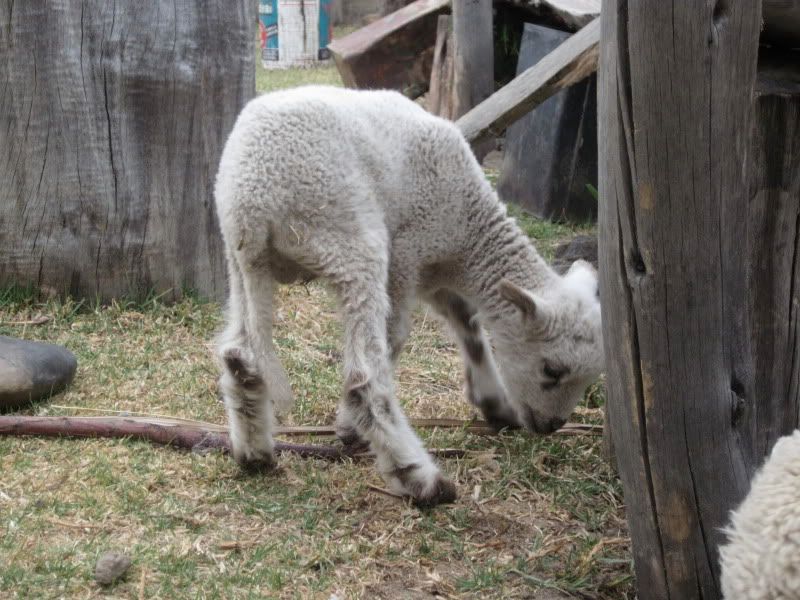
I was both excited and hesitant to visit Santiago de Okola. I had been assured that the accommodations would be "rustic." In preparation, I took what I assumed would be my last shower for a few days, charged all of my electronic devices, and stocked up on bottled water. What I should have brought, but didn't, was a flashlight.
On the way, there we were lucky enough to get a glimpse of the wild flamingos that live in Lake Titicaca.
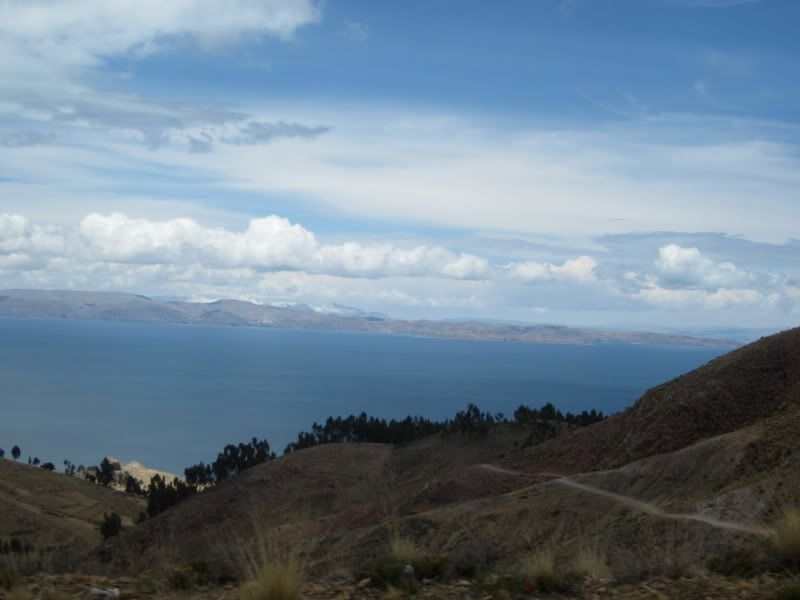
My first view of Lake Titicaca
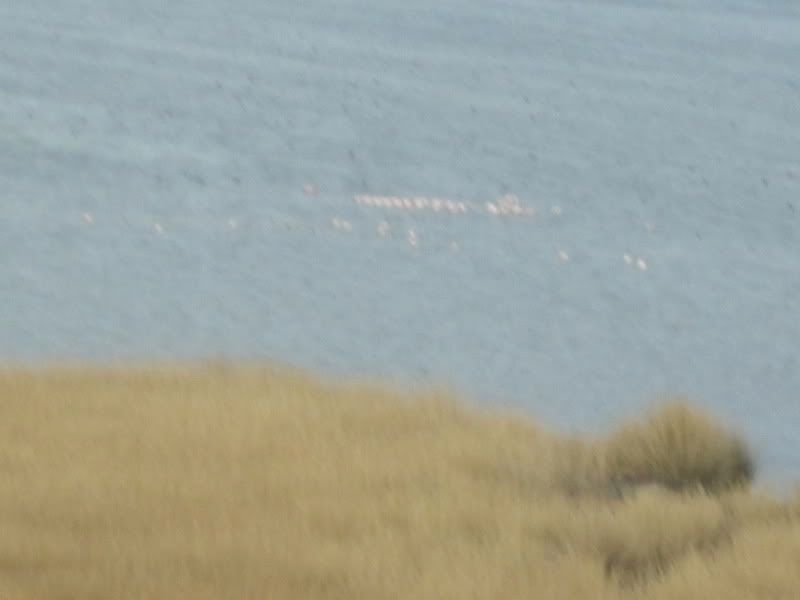
Those pink things in the distance are totally flamingos.
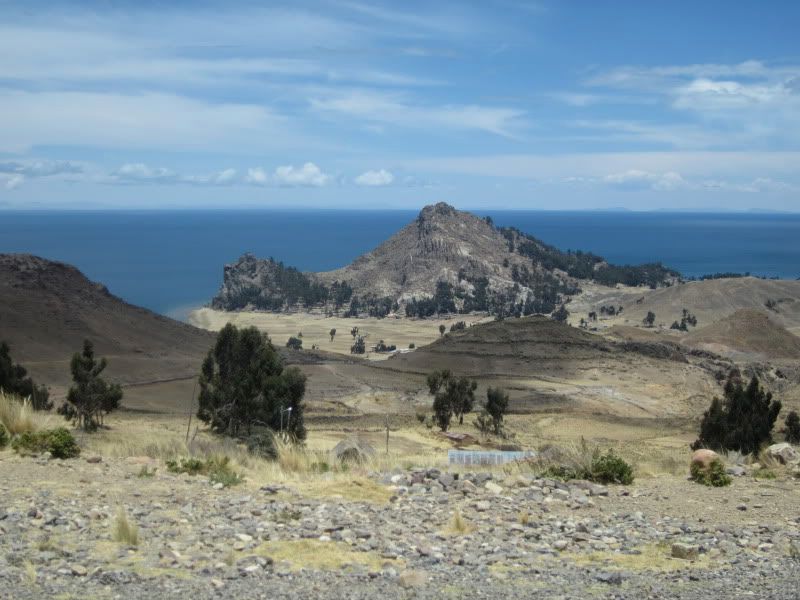
My first view of Sleeping Dragon, the mountain next to Santiago de Okola
When we arrived, we were welcomed by the community leader, Don Tomas, the head of the Agricultural Syndicate, Don Juan, and the town's spiritual leader. Then we were each assigned a family to stay with. My room mate, Tanya, and I were split up in what turned out to be a lucky (for me) turn of events. She went with a woman named Doña Lucia, and I went next door to a man name Don Pasqual. Doña Lucia was as nice as can be, but spoke almost no Spanish. As luck would have it, Tanya spoke a few words of Aymara. But I sure as heck did not. I'm lucky when I can communicate effectively in Spanish!
Both Don Pasqual and Doña Lucia lived near the "beach" (the shore of Lake Titicaca). Each member of the community who hosted us had a special bedroom set aside for their guests. My room, which had two beds, was quite cozy and well-decorated. The room had a cement floor that was covered in beautiful Andean rugs, two beds that were each covered in incredibly warm, woven blankets, a small table, a window, and a compact fluorescent lightbulb.
The homes were all made of adobe, with either thatched or corrugated tin roofs. Don Pasqual's house had maybe four rooms total or so, including a kitchen, a storage room, and the room where he lived. Separately, he had a small bathroom that contained a hole in the ground and a trash can (for used toilet paper) inside and running water to wash one's hands outside. The bathroom was provisioned with such luxuries as toilet paper, soap, and a mirror, and I was grateful for all three.
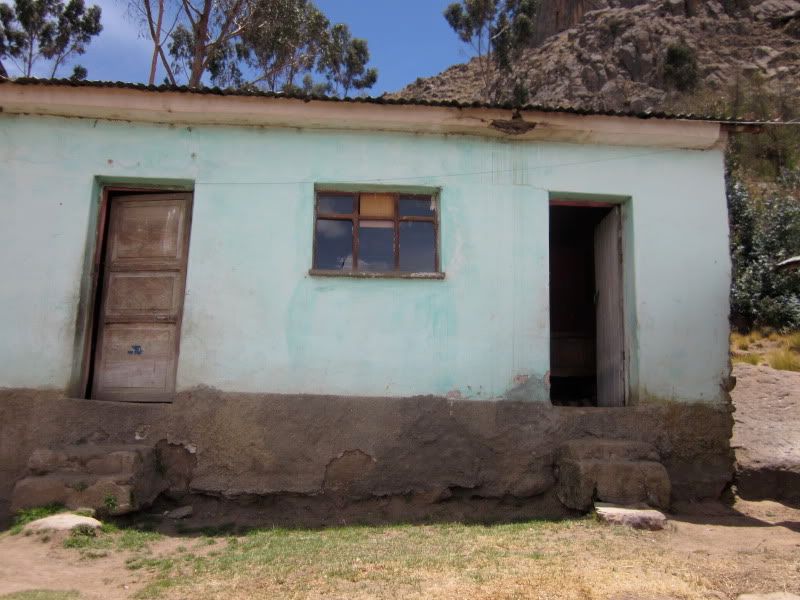
The part of Don Pasqual's home where I stayed.
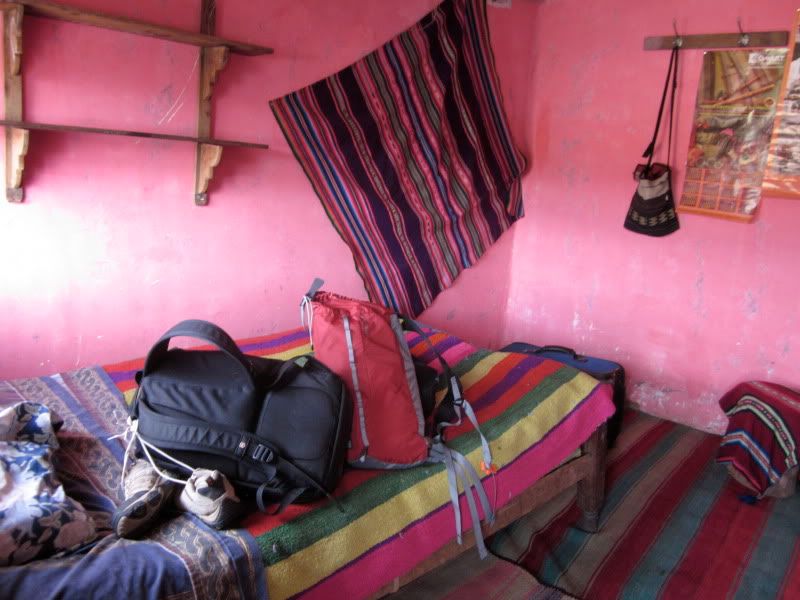
My room
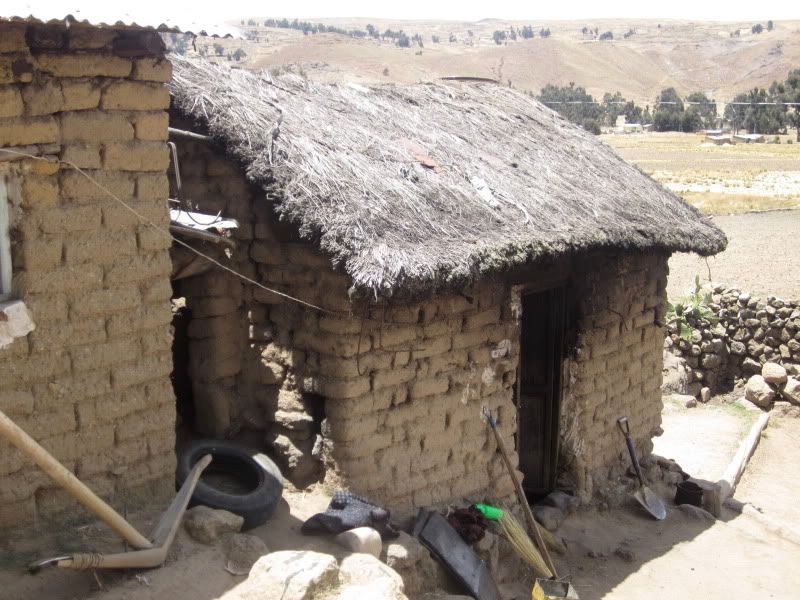
Another part of the house, made of adobe
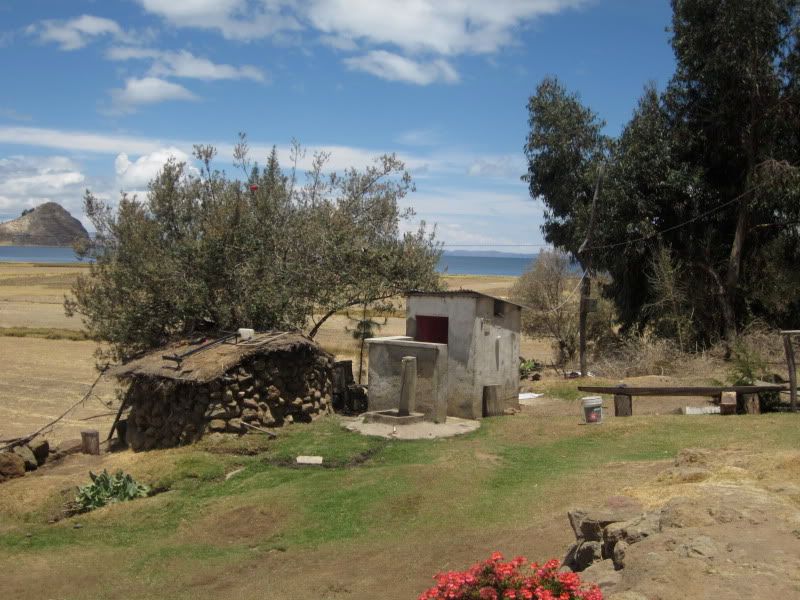
The bathroom
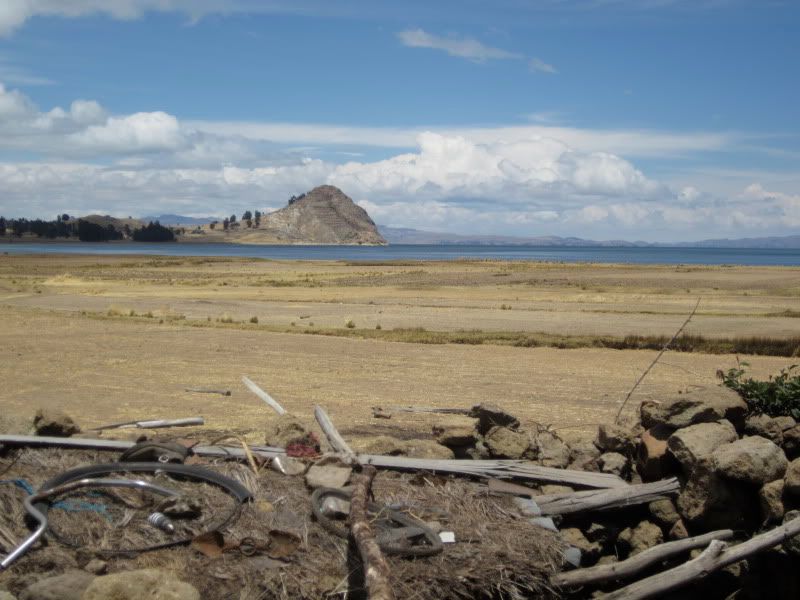
View of Lake Titicaca from Don Pasqual's house
Don Pasqual told me he has 9 kids (3 boys, 6 girls) and 41 grandkids. All of his children are grown and no longer live with him, but I met one daughter and four grandchildren during the few days I stayed with him. The planting season had not started yet when I visited because the rains are late this year, but I did get to see Don Pasqual's livestock. He has a hen and a rooster, two pigs, two dairy cows, several guinea pigs, and 14 sheep (11 grown and 3 babies). Several of the adult sheep are still pregnant and he told me he's got more lambs on the way in the next month.
I assume the pigs are for his family's personal consumption (he told me that the pigs are six months old, making them very slow growing compared to U.S. factory farmed pigs that would already be turned into ham and bacon by that point). The sheep, on the other hand, are for home consumption and for sale. He slaughters lambs at one year of age, but sometimes he also eats or sells grown sheep for meat too. He shears his sheep annually, in February, for wool.
Oh, and the guinea pigs? Those aren't pets; they're food. They live in the kitchen. Peruvians are more into eating guinea pigs than Bolivians, but I guess it's done in both countries. In Peru, the word for guinea pig is "cuy," but in Bolivia they are often referred to as bunnies ("conejo") or "conejo cuy." Next door, Lucia also raises guinea pigs, as well as two pigs and a bull.
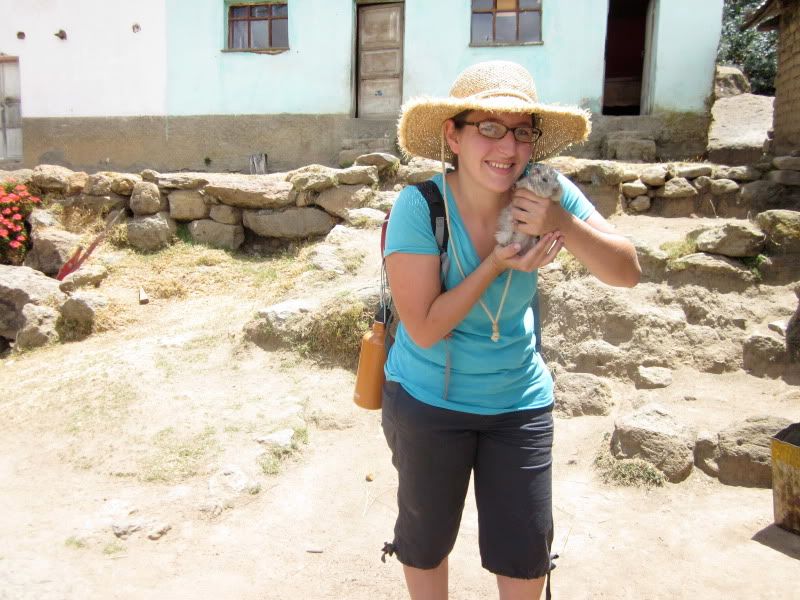
Does this make you hungry?
The animals spend their nights in homemade pens made from mud and rocks in front of Don Pasqual's house. In the morning, each animal has a leash put on and then they are led out to pasture, where the leashes are staked into the ground. There's not much to eat this time of year, and I saw the sheep very selectively eating only the few, tiny green plants and skipping over the dead straw in the field. Families typically also keep haystacks to feed their animals as well. After harvesting the grains they grow each year, the remainder of the plant is kept as animal feed.
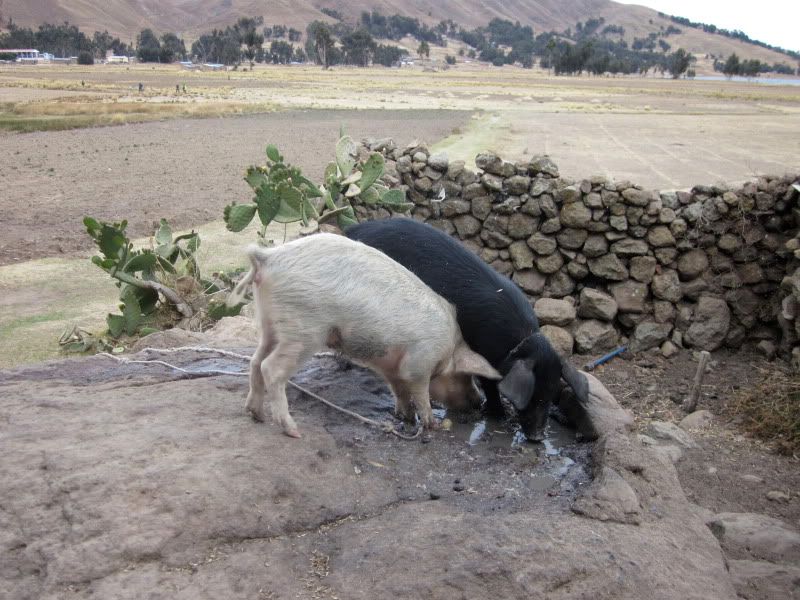
Ham and Bacon, drinking from a puddle
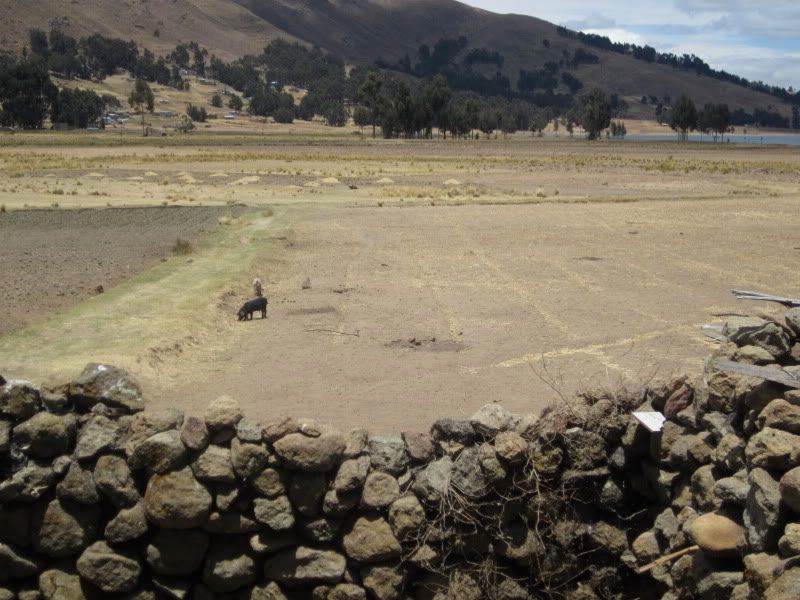
The pigs in the field in front of Don Pasqual's home

The alarm cock
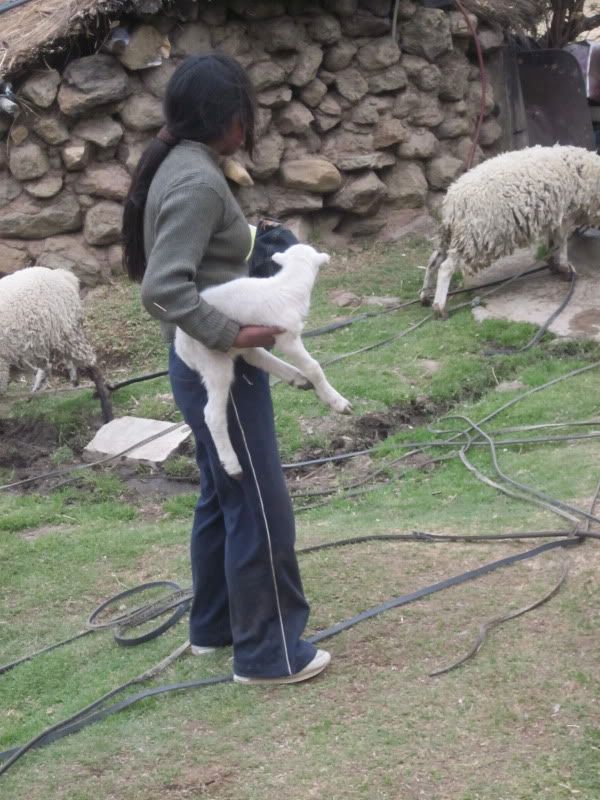
Don Pasqual's granddaughter holding a lamb. Of course I took this opportunity to walk over and pet the baby.
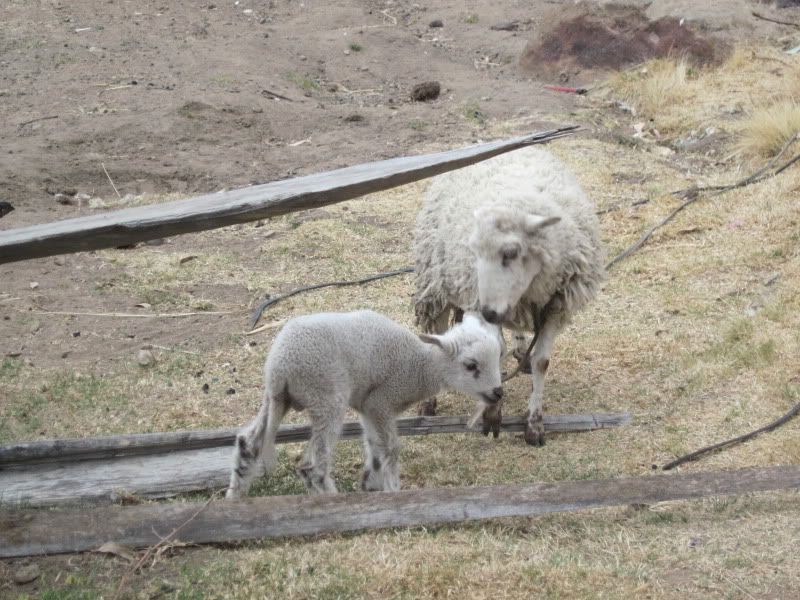
Mama and Baby
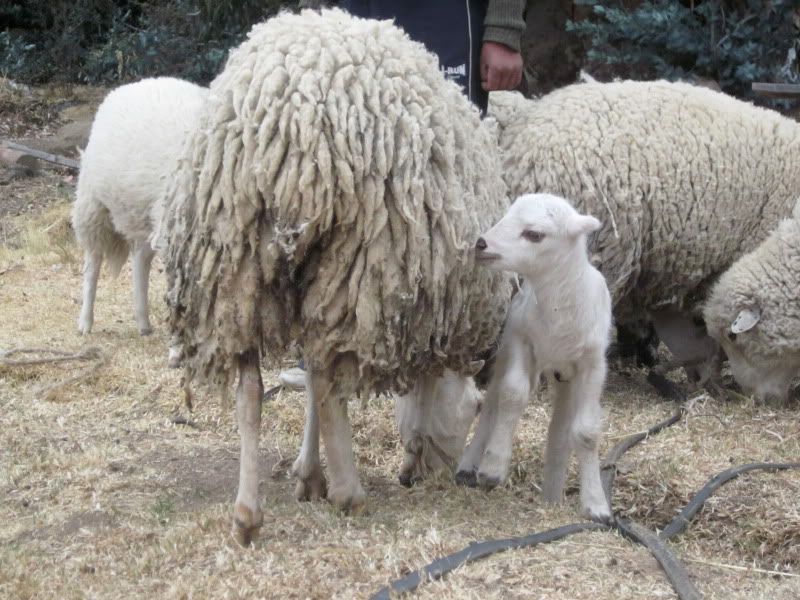
Milk, please!
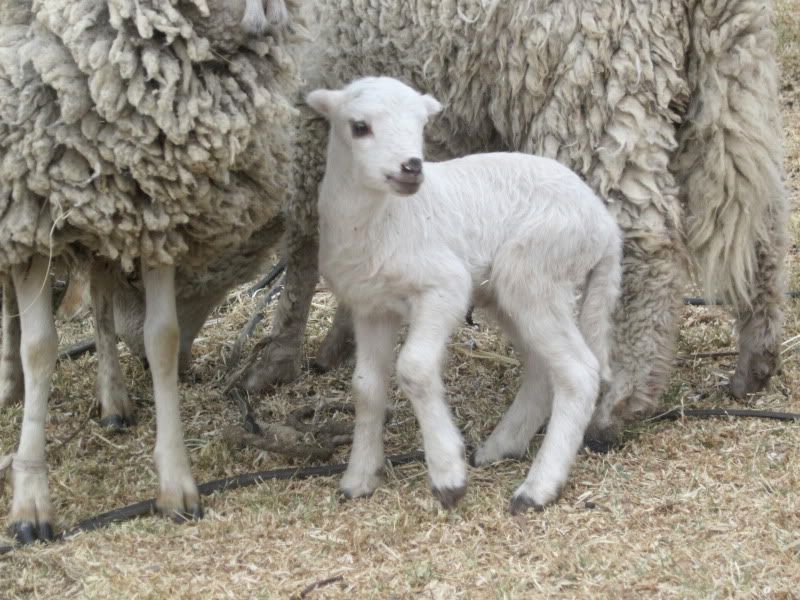
The baby is so young, you can still see his umbilical cord
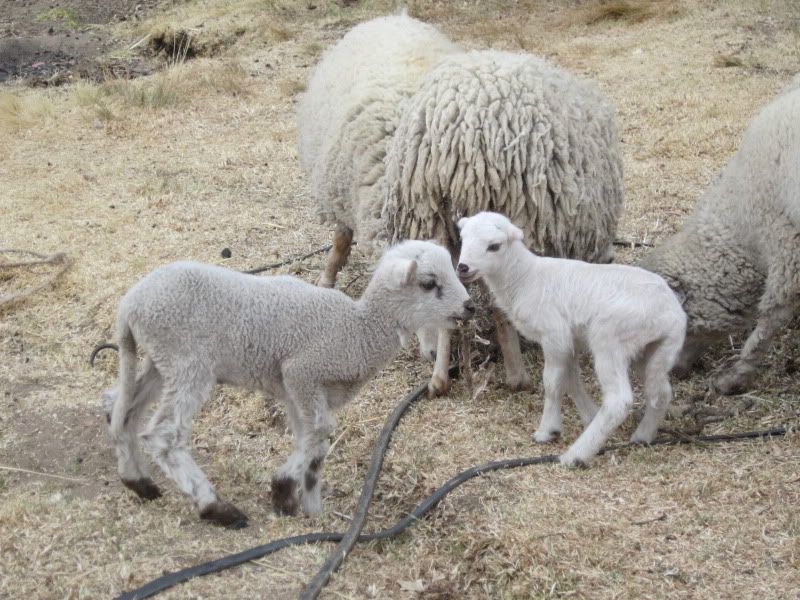
Awwww
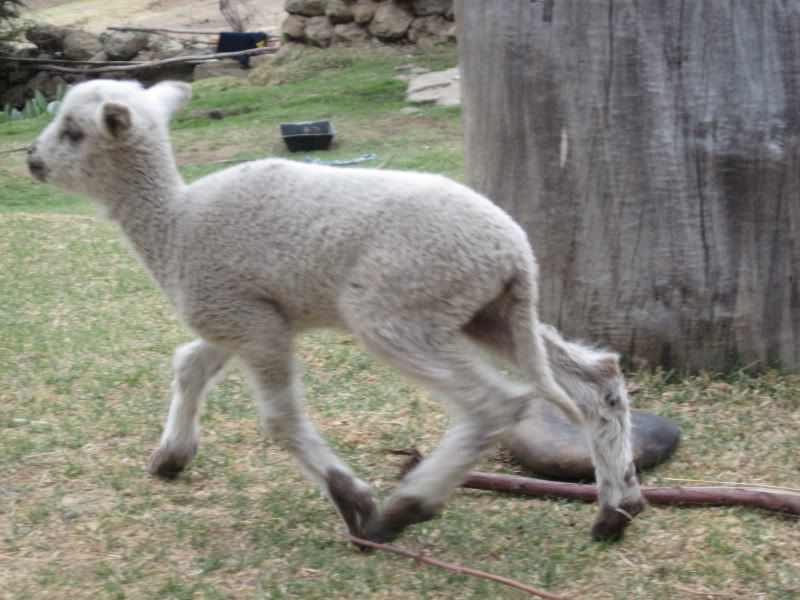
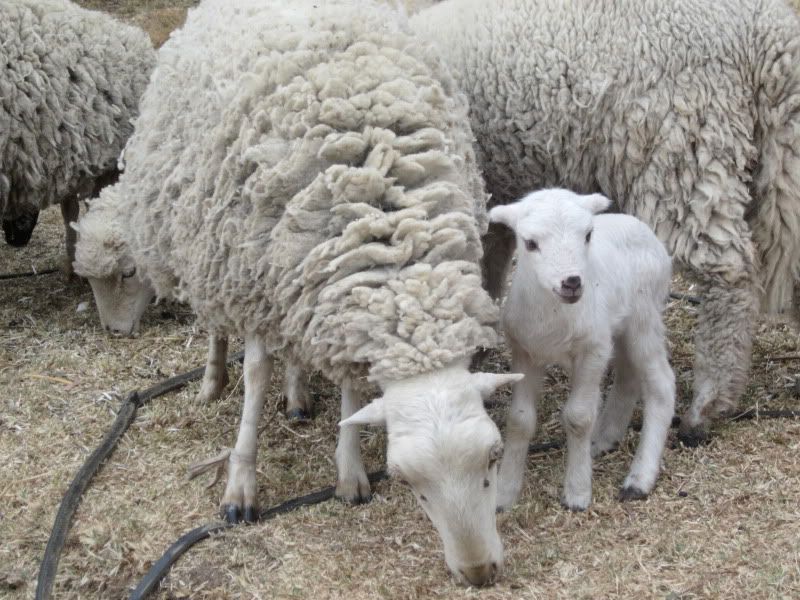
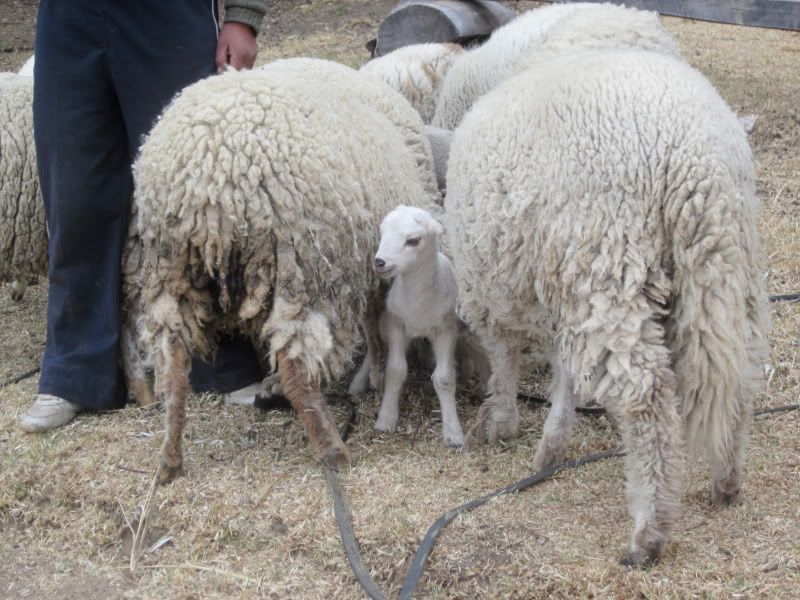
Baby lamb (one week old), standing in between Mom and Dad
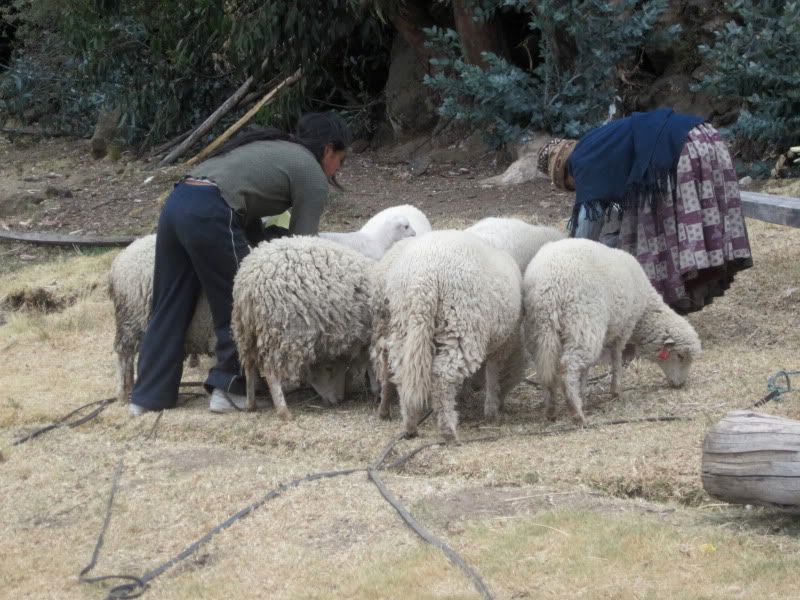
Don Pasqual's 13-year-old granddaughter, removing the leashes from the sheep at the end of the day
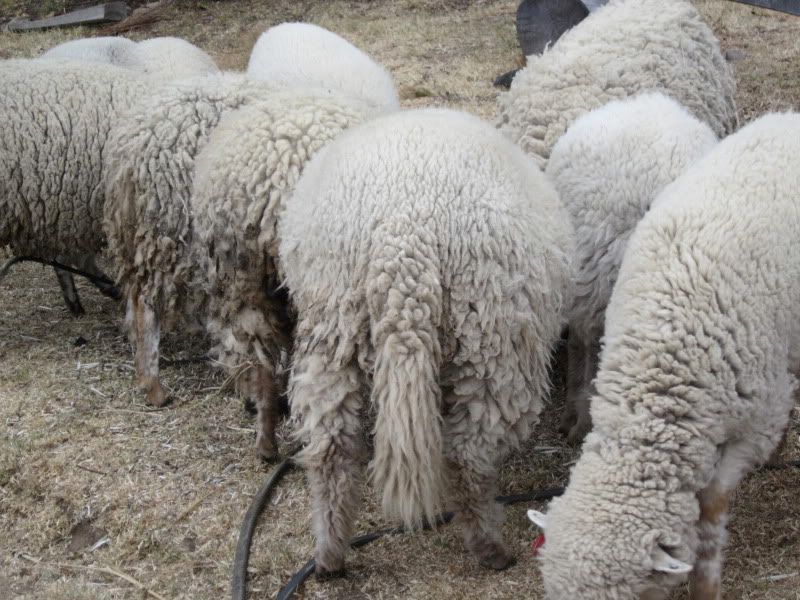
See the length of that tail? In the U.S. sheep often have their tails cropped
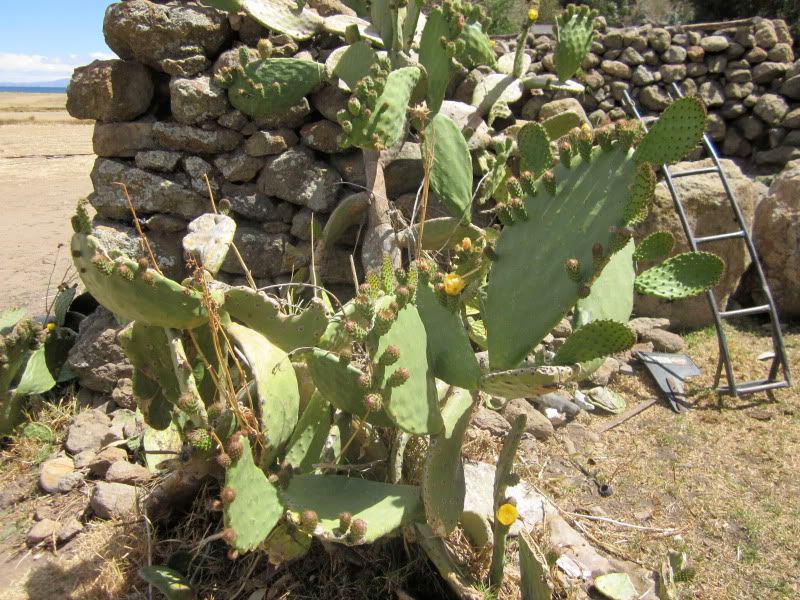
A cactus at Don Pasqual's house. He told me they eat the fruit in January and February, but they don't eat the cactus itself.
At dinner time, I went over to Lucia's, where she had prepared a delicious soup and a main course of beef over a plate of rice and carrots, with potatoes. I ate the soup, some of the potatoes, most of the carrots, and none of the beef.

Delicious soup, made with chard, carrots, and potatoes.
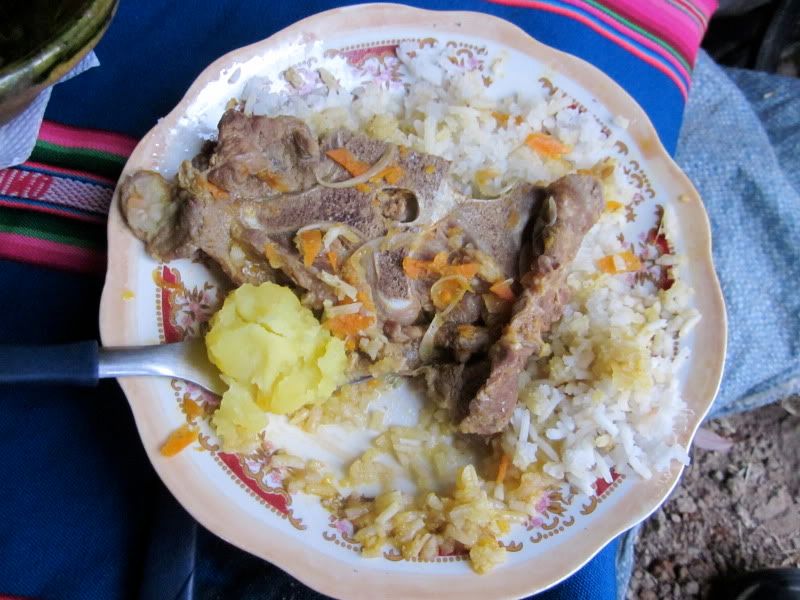
The main course, AFTER I ate it. It looked pretty similar to this before I ate it, with a few extra potatoes on the plate.
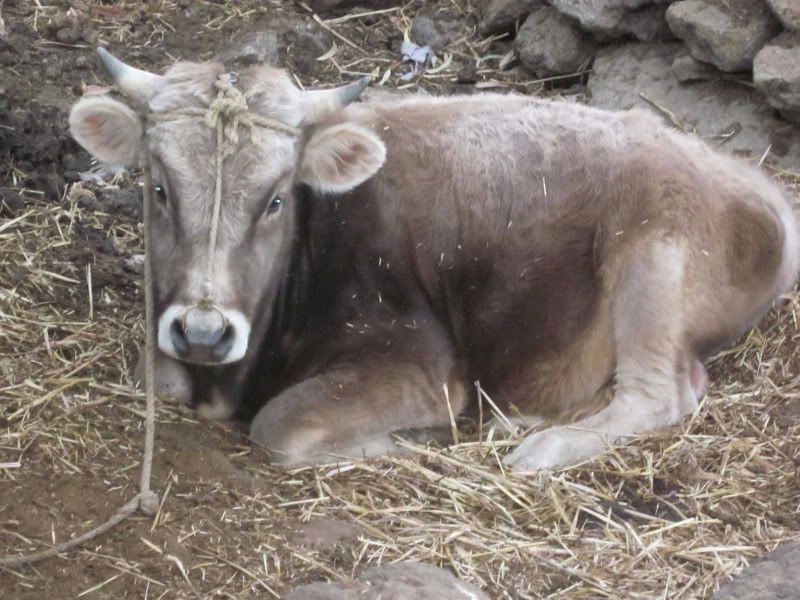
Lucia's bull
No comments:
Post a Comment